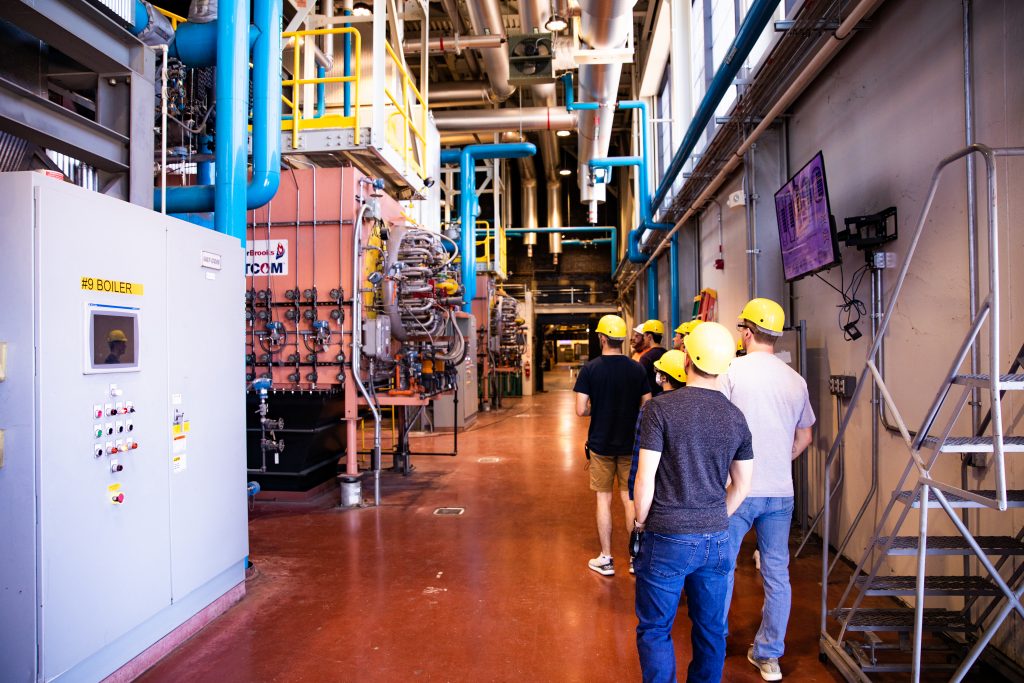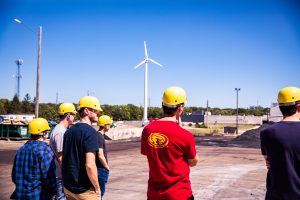
ABE Students Dive into the Heart of Electrical Infrastructure at the Iowa State Power Plant
When it comes to learning about electricity, hands-on experience is crucial. And in TSM 363, hands-on experience is exactly what you’ll get.
Iowa State University Department of Agricultural and Biosystems Engineering assistant professor Josh Peschel brings electrical systems to life in TSM 363, a junior/senior level class about applying electricity and controls in agricultural and industrial settings.
But before learning the ins and outs of the deeply rooted world of electricity, Peschel starts off the first week or two of class with a field trip across campus to the Iowa State Power Plant. Peschel wants to ensure that students see just how intricate the electrical universe is, he says.
“It’s really good to see where the source of all our electricity comes from,” Peschel said. “As we are learning the background of the electrical grid and electrical transmission, being able to come to a place that’s unique like the Iowa State Power Plant lets students see where power comes from when they turn the switch on.”
In class, students learn about all of the electrical infrastructure surrounding communities. From single and three phase power systems, to generators, conductors, or transformers, they get a taste of it all. Every week, the class has a hands-on lab where they manually wire and design electrical systems. The main goal of this class is to show students exactly how much of their world is provided by electricity, Peschel says.
“This class is a bit of a demystifier – your entire life you’ve been walking around all of this electrical infrastructure, but it’s been behind locked doors and closed cabinets,” Peschel said. “In TSM 363, you open those doors and cabinets and you see what’s inside. Because what’s inside is really important for everyday life.”
